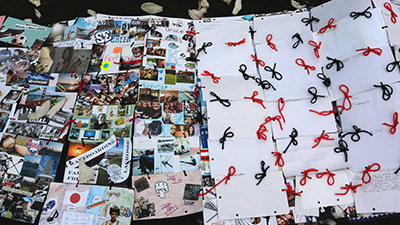Prior to COVID-19, research by New York Life Foundation showed that 69% of teachers have at least one grieving student in their classroom. Those statistics are no longer even close to being accurate in light of the COVID-19 Pandemic. We know that teachers are in a unique position to support their students as they try to cope with life-changing losses. However, teachers themselves often struggle with how to navigate their students’ grief as well as their own grief.
Finding the words for how to open a conversation can be daunting, but staying silent, saying nothing, speaks volumes and adds to the feeling of being alone. Here are some resources to help support and guide teachers and other school personnel in becoming more grief-sensitive educators.
www.grievingstudents.org Information, teaching modules, and videos about talking to and supporting students, with content overseen by the Coalition to Support Grieving Students and the National Center for School Crisis and Bereavement. This is a great source of ideas for school personnel about talking with kids, what not to say, providing support over time, peer support, professional preparation and self-care, grief’s impact on learning, and an advice line.
Here are two excellent free-use articles written by teachers of English that are filled with thoughtful ideas and learned wisdom:
Dealing with and Writing about Death by Gregory Shafer, National Council of Teachers of English, English Journal 2017
https://library.ncte.org/journals/ej/issues/v107-2/29353
One Teacher’s Experiences: Responding to Death through Language by Lisa Beckelhimer, National Council of Teachers of English, English Journal 2017
https://library.ncte.org/journals/ej/issues/v107-2/29354
Social Emotional Creative Literary Project
A fabulous language arts exercise created and led by Kori Johnson, from Turning the Page, with Kramer Middle School students.
1. Choose a scene from the book and think about how the character is feeling. The scene we chose was when Corinna confronts Joci about the comment she made about her mom (pp. 102-104). The students said that in that moment Corinna was feeling disappointed, betrayed, alone, etc.
2. Think about a time when you felt the same way at the character is feeling in the scene. Free write about that moment for 5 minutes. We gave the students prompts – “A time when I felt betrayed/disappointed was,” “A time when I worked through a problem with a friend was,” “A time when I really missed someone was…”
3. After you finish your free write, read over what you wrote and circle any important words or phrases. Then choose the one word or phrase that sticks out to you, the one that really captures how you felt in that moment.
4. Write that word or phrase on a blank piece of paper. Below that word, brainstorm a list of details (words and images) describing the moment you are writing about. Think about it like you’re describing a scene. We gave students some ideas to consider:
- What were you wearing?
- What was the weather like? What season was it?
Art and Story Telling
7th graders at Cinnaminson Middle School made personal legend quilts after reading the novel IF ONLY, in which the protagonist makes a memory quilt.

Collage about the book
Made by Maddie Heston

